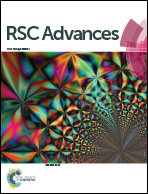Improving the bias range for spin-filtering by selecting proper electrode materials
Abstract
Using the non-equilibrium Green’s function method combined with density function theory, we investigate the spin transport for carbon chains connected to electrodes of different materials. When a carbon chain is linked to the C–H (C–H2) bonded edges of H2–ZGNR–H, the carbon chain displays a net spin polarization with a net magnetic moment of 1.367 μB (−0.935 μB) for the C–H (C–H2) bonded edge contacts, but the directions of the net magnetic moment are opposite, and the latter system shows a larger spin conductance. Then, we choose N-doped H2–ZGNR–H as the left electrode, and the right electrode is replaced with a single-capped carbon nanotube, armchair graphene nanoribbon (AGNR), or gold electrode. The conductance and the bias range for perfect spin-filtering of these systems shows obvious differences: the carbon nanotube (Au) system shows weaker conductance, and the AGNR system shows the largest bias range for perfect spin-filtering.


 Please wait while we load your content...
Please wait while we load your content...